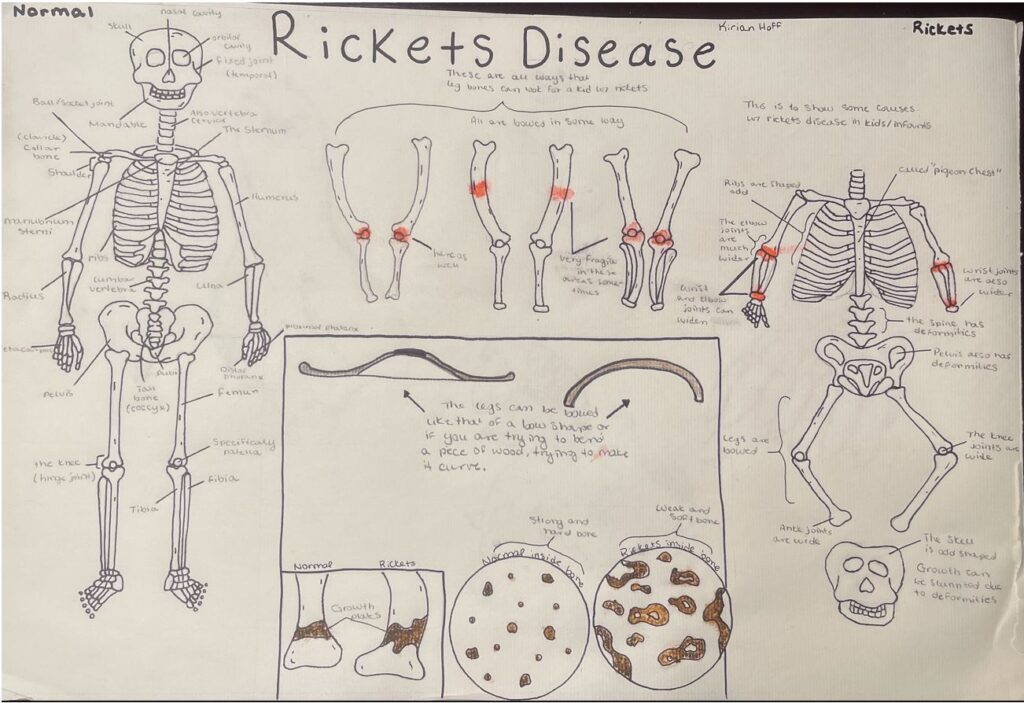For the STEAM Project, I talked about Rickets Disease in children, focusing around the skeletal system and how their bones are often deformed in different ways. I drew a normal skeleton and what the skeleton of a child with rickets would look like. As well as comparing it to things like a hunting bow, to think a little outside the box.


Rickets disease is the softening and weakening of bones in children. This disease is usually caused by extreme and prolonged vitamin D deficiency. Rickets disease may also be inherited but this is very rare. Rickets is common among individuals with a darker complexion, people who live in northern latitudes, individuals who take certain medications and individuals who were born prematurely. Vitamin D helps a child’s body absorb calcium and phosphorus from food. Getting too little vitamin D makes it difficult to meet the body’s demand for proper calcium and phosphorus levels in bones, which will eventually lead to rickets. Rickets disease may develop as a result of a lead way disease that affects the way bones absorb vitamins. Some of these diseases include celiac disease, cystic fibrosis, and kidney problems. Side effects of rickets disease include bowed legs or knock knees, thickened wrists and ankles as well as breastbone projection. Hoff’s art piece demonstrates the side effects of Rickets diseases. It depicts swelling at the joints of the wrist, knee and elbows. Hoff’s piece also depicts how the bones take on a “bowed” shape. Prevention of Rickets disease is possible by making sure vitamin D is incorporated into the diet. I enjoyed reviewing this piece. Hoff’s drawing clearly demonstrated her topic of Rickets disease.